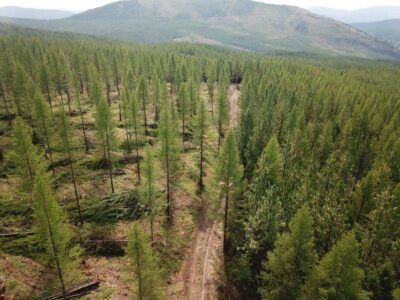Pine Beetles, Environmental Law, and Climate Change Adaptation
Inflexible laws may be the best response to climate change
Anyone who lives or has visited the Intermountain West over the past decade or so has noticed the devastating impact of a mountain pine beetle epidemic on the pine forests from Arizona and New Mexico all the way up to British Columbia and Alberta. As a result of warmer winter weather because of climate change, mountain pine beetle populations have exploded – not just in numbers, but also in range. Beetles have been found hundreds of miles north of their historic range. And because the forests they are entering into have not been exposed to beetle infestations in the past, the trees are vulnerable to the infestation. Tens of millions of acres of forests have been affected, with many dead and dying trees.
One response to the pine beetle epidemic has been to try and prevent, control, mitigate, or reduce the infestations. A wide variety of techniques have been tried (chemicals, fire, even sound), but most common have been timber management techniques that attempt to destroy beetle-infested trees before the beetles can spread to additional trees in the area or that attempt to “beetle proof” the forest before an infestation occurs.
Of course, widespread use of logging and other mechanical timber management techniques are both costly and controversial. Federal land management agencies (which own a lot of the affected land) have at times attempted to reduce the costs by allowing for the commercial sale of larger trees to offset the costs of the beetle control projects. The projects are controversial because there is often at least some public opposition to the commercial sales for timber, or even to the beetle management projects in general
Moreover, there is a range of environmental laws that apply to these beetle control projects (such as the National Environmental Policy Act or the Endangered Species Act or the National Forest Management Act). Agencies and a range of interest groups have argued that these environmental laws impose significant red tape and restrictions on beetle management projects – making them more costly, requiring more time before they can be initiated, or even just prohibiting them. In order to reduce these barriers, members of Congress have frequently proposed loosening the restrictions on environmental laws to allow beetle management to occur at a “landscape” level. Some of those proposals have come to pass. For instance, the Healthy Forest Restoration Act, passed early in the George W. Bush Administration, was justified in part to allow for beetle control projects.
But do these various control methods actually work? To answer this question, I teamed up with a law student here at Berkeley and one of the world’s leading experts on mountain pine beetles. The student and I summarized the many examples of laws or bills that relied on beetle control to justify weakening environmental laws. Our entomologist coauthor reviewed the relevant scientific literature on the methods used by beetle control projects. The article (online here, with free and open access) concludes that many methods are ineffectual, others are only effectual at unaffordable and unrealistic costs, and extensive use of these techniques may even be counterproductive for long-term adaptation by forests to climate change. Specifically, cutting a whole lot of trees may (but probably won’t) stop a beetle infestation in the short-term. But in cutting those trees, you aren’t distinguishing between the trees with greater or lesser resistance to the beetles. But if you let the beetles kill the trees, they would distinguish (not intentionally, of course!). The trees with the greatest resistance would survive the infestation – this would allow the pine forest to evolve for greater resistance to the beetle infestations over time.
There’s obviously an important lesson for U.S. and Canadian forest policy here. But there’s also a bigger lesson for how environmental law deals with climate change. We might think that we need to make our environmental laws more flexible so that they can adapt to climate change. But it might turn out that in the natural human pressure to “do something” about climate change, we might take that flexibility and instead do a lot of things that are maladaptive for climate change. Instead, constraining ourselves with relatively rigid laws might produce better results by preventing us from hastily doing counterproductive actions – if only temporarily, by making ourselves go through a public, administrative process to make sure what we’re doing makes sense.








Reader Comments